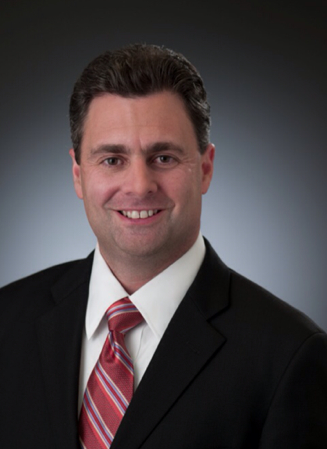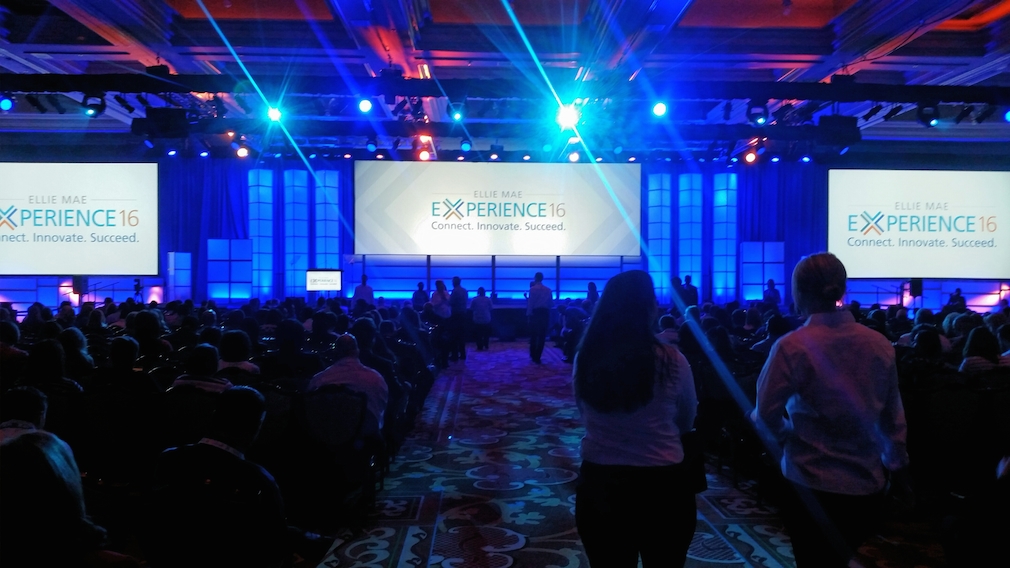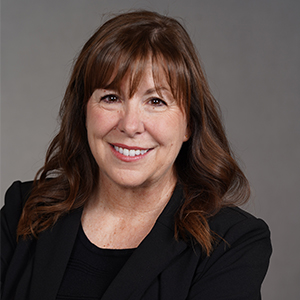#div-oas-ad-article1, #div-oas-ad-article2, #div-oas-ad-article3 {display: none;}
Executive Conversations is a HousingWire web series that profiles powerful people in the financial industry, highlighting the operations and the people that make this sector tick. In the latest installment, we sit down with Jonathan Corr, president and CEO of Ellie Mae, to find out how the company is innovating despite increased regulation.
Q. Ellie Mae has seen exceptional growth in the last several years, and won the growth category in this year's HW Tech100. How many people are currently using Encompass?
 A. We have 166,000 people on the SaaS platform, so there are millions of transactions flowing through Encompass on a monthly basis. It’s become a very positive virtuous cycle, and it continues to become more successful in each of the segments we are going after: mid market to large to enterprise. And as we’ve had success that breeds more success.
A. We have 166,000 people on the SaaS platform, so there are millions of transactions flowing through Encompass on a monthly basis. It’s become a very positive virtuous cycle, and it continues to become more successful in each of the segments we are going after: mid market to large to enterprise. And as we’ve had success that breeds more success.
In terms of the different types of lenders, there has definitely been momentum in the independent mortgage banks, but the growth in depositors, community banks and regional banks has been fantastic. We continue to extend market leadership and focus on doing all the heavy lifting for our customers. Our goal is to make the big events, like implementing Know Before You Owe, into non-events. It’s a large, audacious goal, but that’s our focus. As we listen to our customers and bring in new solutions, like AllRegs and Mortgage Returns, as we adopt those it helps drive the overall growth of the company.
Q. From your vantage point, what did the rollout of the Know Before You Owe rule mean for the industry?
A. I think the goal of Know Before You Owe is a noble one — to make it more transparent for the consumer. It takes two very different sets of disclosures and takes out the parts that meant nothing to the consumer and make it easier for them to understand. But it was a lot more than one or two forms — it was a massive change from the standpoint of business processes, workflow, rules, all the things people had been doing for 30-40 years. It was a pretty dramatic change.
And no matter how much people prepared for this change — and a lot of people did a good job preparing — the challenge is that it’s going to take a while as an industry for things to run smoothly. The truth is, no matter how much you practiced, you didn’t get a chance to scrimmage or play the game in preseason. One day you were playing the game one way and on Oct. 3 you had to play it a different way, in real time. That’s hard, really hard. The first couple months were really painful but these last several were a little bit better and eventually it will smooth its way out.
Q. In the end, do you think consumers get a better closing experience as a result?
A. A lot of the elements of Know Before You Owe really force automation, which is great. The closing process is now clearer to consumers, but could it be clearer? Probably. For lenders, what they have angst about right now is there are still grey areas on certain product types, construction for instance. Without clarity, that area of credit is going to dry up a bit. We’ve got this interesting dynamic where we are trying to make it more transparent for consumers, but many of these same consumers might be less sophisticated or have a situation where credit is harder to get, and what’s going on right now because of the regulation is that credit is probably tightening a bit for them.
In the end, I think it all works out, but not sure how long it will take to get there. Will we get clarity from the CFPB? Hopefully we will get direction, and not just through enforcement. There are still some grey areas, and how do you play the game if you don’t know what the rules are? Or what counts as a foul? Or what the penalties might be — if it is a foul, do I get 15 yards or 100? Or are you going to fine me $5 million?
On the other hand the rule pushes for more automation in order to create a better consumer experience, and that’s been our vision in this company since it was founded 17 years ago.
Q. Why has automation been such a focus for Ellie Mae? Most companies were not thinking about automation that long ago.
A. Sig Anderman, our founder, has been in residential finance for 40 years in different areas, including as a mortgage banker. He say the inefficiencies first hand and although he’s not a tech guy, he saw that it was all about getting data from the borrower and figuring out what the consumer can afford, then sending that data to other parties to verify the information was true. As he looked at from 20,000 feet, he recognized that technology should be all over that process and yet it wasn’t.
The Internet, of course, got him thinking about the potential to capture information and share it securely. At that time, compliance was important but the enforcement level was different, and quality was important but not like it is now. But how we thought about the market was different than many others. A lot of people were thinking about a B2B platform, including Microsoft and GE, but they all wanted loan officers and mortgage brokers to go to a separate portal, and you just could not change that behavior pattern in loan officers. Sig realized they needed to come to a doorway within the LOS.
When I joined Ellie Mae in 2002, we looked out there and saw that there were no great doorways, so we built a new doorway — that was the origin of Encompass. Other companies had invested certain amounts into developing software, but our vision was if we can automate the entire process and take out inefficiencies we could afford to invest a lot more. Automating everything in the process became our North Star.
When we built Encompass it was out-of-the-box thinking — we weren’t worried about making money in small windows of software. When we started we were doing a business network, an LOS broker network. As the market changed we shifted to offering more for lenders, and if you think about it, the lender controls more of the process than the broker, so they would invest in compliance and quality. As the tides changed, we were fortunate.
Q. There has been a lot of talk about innovation at the Ellie Mae Experience conference, but how can you really innovate in the midst of so much regulation?
A. It can feel restrictive, but when you have something like the Know Before You Owe regulation, you innovate around the regulation. One of the things we did in 2010, when RESPA changed, we came out with concept around discourse tracking. Nobody had done that. We looked at all this regulation, which changed all this business flow, and created something in terms of how lenders could manage through that process.
We did the same with the RESPA-TILA regulation. We really looked at where the pain points were going to be and worked very closely with our compliance team and product team and we are very excited and pleased with what we accomplished.
Q. What are you looking forward to with Ellie Mae this year?
A. The stuff we’ve got queued up for our customers! That includes mobile, Encompass CRM and the Encompass compliance management system. There’s a lot of heavy lifting there — the reception here has been spectacular. It’s so exciting to roll out the next gen things we’ve been working on for a while to our customers, including the next version of our third-party web center and next generation of consumer experience. This is the fuel that drives innovation.






